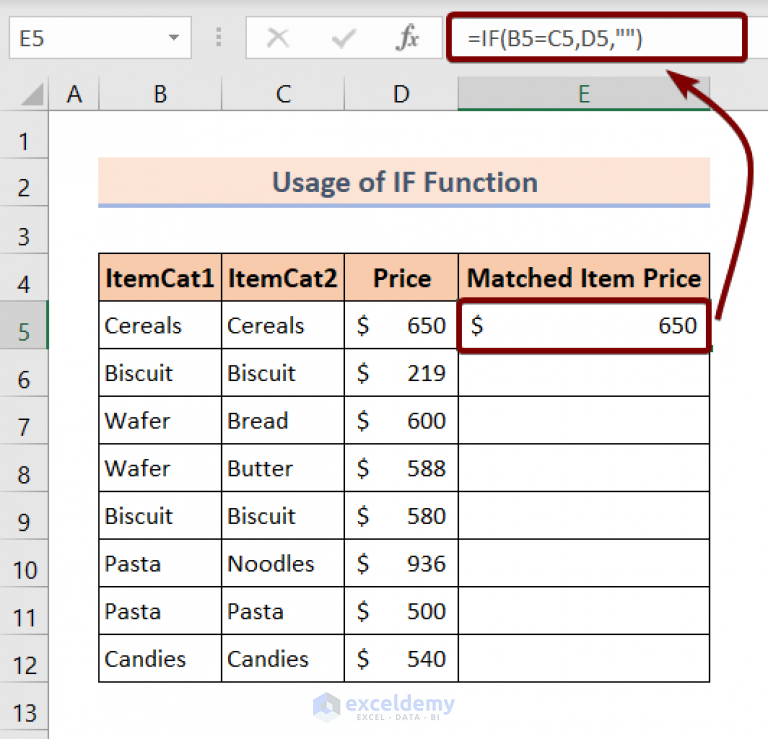Select an Entire Excel Table for VLOOKUP: 5 Tips

VLOOKUP is a powerful Excel function that allows you to retrieve data from a large table based on a specific lookup value. When dealing with extensive datasets, selecting the entire table for VLOOKUP can be incredibly beneficial. In this comprehensive guide, we will explore five expert tips to effectively select an entire Excel table for VLOOKUP, ensuring optimal performance and accurate data retrieval.
Understanding the Importance of Table Selection for VLOOKUP

The VLOOKUP function in Excel is a versatile tool for performing lookups and retrieving data from a table. It allows you to search for a specific value (lookup value) in a given column and retrieve the corresponding value from another column in the same table. However, the accuracy and efficiency of VLOOKUP heavily rely on how the table is selected and structured.
When working with large datasets, selecting the entire table as the lookup range for VLOOKUP offers several advantages. It simplifies the formula, enhances performance, and reduces the risk of errors. By understanding the best practices for table selection, you can leverage VLOOKUP to its full potential and streamline your data retrieval processes.
Tip 1: Define Your Table Clearly

Before selecting the table for VLOOKUP, it’s crucial to define the table’s boundaries clearly. Excel tables should have a consistent structure with well-defined headers and data ranges. Here’s how you can ensure a proper table definition:
- Header Row: Ensure your table has a dedicated header row with descriptive column names. This row should clearly indicate the purpose and content of each column.
- Data Range: Clearly identify the range of cells that contain your actual data. Avoid including empty rows or columns within this range, as they can impact the accuracy of VLOOKUP.
- Table Name: Consider naming your table using Excel's Table feature. This provides a structured reference and makes your formulas more readable. To name a table, select any cell within the table, go to the "Table Design" tab, and enter a name in the "Table Name" field.
By clearly defining your table, you establish a robust foundation for VLOOKUP and ensure that the function operates on the intended dataset.
Example: Table Definition
Let’s consider a dataset containing employee information. The table has headers for “Employee ID,” “Name,” and “Department.” The data range starts from cell A2 and extends to the last row with data, say cell C50.
| Employee ID | Name | Department |
|---|---|---|
| 1001 | John Doe | HR |
| 1002 | Jane Smith | Finance |
| ... | ... | ... |
| 1050 | Robert Johnson | IT |

Tip 2: Use Absolute References for Table Selection
When selecting the table for VLOOKUP, it’s essential to use absolute references to ensure the formula works correctly regardless of where it’s copied or moved. Absolute references lock the cell references in place, preventing them from changing when the formula is copied to other cells.
To use absolute references, add the dollar ($) sign before the row and column references. For example, if your table starts from cell A2 and ends at cell C50, the absolute reference would be $A$2:$C$50. This ensures that no matter where you copy the formula, it always refers to the same table range.
Example: Absolute References
Let’s use the employee dataset example from the previous section. If you want to retrieve the department for a given employee ID using VLOOKUP, your formula might look like this:
=VLOOKUP(E2, $A$2:$C$50, 3, FALSE)
Here, E2 is the cell containing the employee ID you want to look up, and $A$2:$C$50 is the absolute reference to the entire table range. The number 3 specifies the column from which you want to retrieve the result (in this case, the third column containing the "Department" data), and FALSE indicates an exact match is required.
Tip 3: Handle Dynamic Datasets with Table Formulas
In many cases, your dataset may grow or change over time, and you’ll need to adjust your VLOOKUP formulas accordingly. Excel’s Table feature offers a dynamic solution for this scenario.
When you convert a range of cells into a table, Excel automatically adjusts the table's references when new data is added or existing data is modified. This ensures that your VLOOKUP formulas always refer to the correct and up-to-date table range.
Creating an Excel Table
To create an Excel table, follow these steps:
- Select the range of cells that contain your data, including the header row.
- Go to the "Insert" tab and click on the "Table" button.
- In the "Create Table" dialog box, ensure that the "My table has headers" option is checked, and click "OK."
Excel will then format your selected range as a table, complete with a table name and automatic filtering capabilities.
Using Table References in VLOOKUP
When using an Excel table as your lookup range, you can simply refer to the table name in your VLOOKUP formula. Here’s an example:
=VLOOKUP(E2, Table1, 3, FALSE)
In this formula, "Table1" is the name of the Excel table you created. Excel automatically adjusts the table's range as new data is added, ensuring that your VLOOKUP always works with the latest dataset.
Tip 4: Optimize Table Size and Structure

The size and structure of your table can significantly impact the performance of VLOOKUP. Larger tables may lead to slower calculation times, especially when using complex formulas. Here are some tips to optimize your table:
- Remove Unnecessary Columns: If there are columns in your table that are not required for the VLOOKUP operation, consider removing them. This reduces the lookup range and improves performance.
- Sort Data Efficiently: Ensure that your table is sorted in ascending order based on the lookup column. This can speed up the VLOOKUP process, especially when an approximate match is acceptable.
- Consider Alternative Functions: If your table is extremely large and VLOOKUP is becoming slow, consider using alternative functions like INDEX-MATCH or XLOOKUP (available in newer Excel versions). These functions offer improved performance for large datasets.
Example: Optimizing Table Structure
Let’s continue with our employee dataset example. If you have a large number of employees and only need to perform VLOOKUP on the “Department” column, you can optimize the table by removing unnecessary columns.
| Employee ID | Department |
|---|---|
| 1001 | HR |
| 1002 | Finance |
| ... | ... |
| 1050 | IT |
By removing the "Name" column, you reduce the table size and focus only on the relevant data for VLOOKUP.
Tip 5: Error Handling and Troubleshooting
Even with proper table selection, you may encounter errors or unexpected results with VLOOKUP. Understanding common errors and knowing how to troubleshoot them is essential for accurate data retrieval.
- Lookup Value Not Found: If VLOOKUP returns the #N/A error, it means the lookup value was not found in the table. Ensure that your lookup value is within the range of values in the table and that the table is sorted correctly.
- Incorrect Table Range: Double-check that you have selected the correct table range for VLOOKUP. Inaccurate table references can lead to incorrect results or errors.
- Case Sensitivity: VLOOKUP is case-sensitive by default. If you're encountering unexpected results, consider converting your lookup value and table data to the same case (e.g., uppercase or lowercase) to ensure a match.
- Alternative Functions: If VLOOKUP isn't providing the desired results, consider using alternative functions like INDEX-MATCH or XLOOKUP. These functions offer more flexibility and can handle complex scenarios more effectively.
Error Handling Example
Let’s say you’re looking up an employee ID (1051) in the employee dataset, but the ID is not found in the table. VLOOKUP will return the #N/A error. In this case, you should:
- Check if the employee ID (1051) is within the valid range of employee IDs in the table.
- Ensure that the table is sorted correctly based on the "Employee ID" column.
- If the ID is valid and the table is sorted, consider using an approximate match (by setting the fourth argument of VLOOKUP to TRUE) or exploring alternative functions.
Conclusion
Selecting the entire Excel table for VLOOKUP is a powerful technique for efficient and accurate data retrieval. By following the tips outlined in this guide, you can optimize your VLOOKUP formulas, handle dynamic datasets, and troubleshoot common errors effectively.
Remember to define your table clearly, use absolute references, leverage Excel tables for dynamic references, optimize table size and structure, and implement proper error handling. With these practices, you'll be able to unlock the full potential of VLOOKUP and streamline your data analysis tasks.
What is the purpose of VLOOKUP in Excel?
+
VLOOKUP is an Excel function used to retrieve data from a table based on a specific lookup value. It allows you to find a value in a given column and return a corresponding value from another column in the same table.
How do I select the entire table for VLOOKUP?
+
To select the entire table for VLOOKUP, use absolute references (A2:C50) to define the table range. This ensures that the formula remains consistent when copied to other cells.
What are the benefits of using Excel tables with VLOOKUP?
+
Excel tables provide dynamic references, ensuring that VLOOKUP formulas always refer to the correct table range, even when new data is added. This simplifies formula management and enhances accuracy.
How can I optimize table size for VLOOKUP performance?
+
Remove unnecessary columns and ensure your table is sorted efficiently. Consider alternative functions like INDEX-MATCH or XLOOKUP for extremely large datasets to improve performance.
What should I do if VLOOKUP returns an error?
+
Common errors include #N/A (lookup value not found) and incorrect table range. Ensure your lookup value is valid, the table is sorted correctly, and consider using alternative functions or adjusting your formula for better results.



